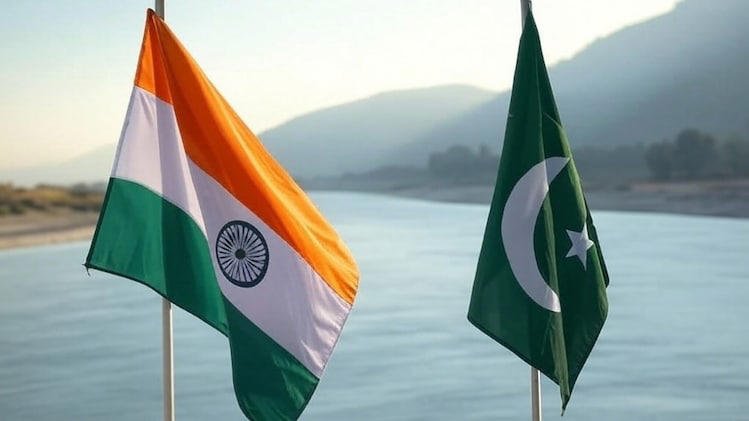Introduction: Geopolitics Meets Economics
The year 2025 marked a dangerous inflection point in South Asia’s geopolitical landscape. Following a deadly terrorist incident in Pahalgam, India’s military launched Operation Sindoor targeting cross-border militant infrastructure. Pakistan’s swift retaliation, including the downing of five Indian fighter jets, escalated tensions to levels unseen in over two decades.
Beyond the security implications, this confrontation has delivered a jarring shock to the economic foundations of both countries. This report evaluates the conflict’s impact across financial markets, fiscal stability, investor confidence, and global supply chains, and offers strategic imperatives for mitigating long-term economic fallout.
1. Market Reactions: Diverging Trajectories
India’s Measured Resilience
Indian equity markets responded with unexpected poise. Despite military action, the BSE Sensex and Nifty 50 closed in positive territory, signaling investor faith in domestic demand and macroeconomic stability. However, the Indian rupee’s 0.5% decline reflects a nuanced reaction—highlighting currency markets’ sensitivity to capital flow risks and rising oil prices.
This resilience is underpinned by years of structural reforms—diversified exports, ample FX reserves, and credible fiscal policy—that collectively buffer short-term shocks.
Pakistan’s Volatility Spiral
In contrast, Pakistan’s financial system came under immediate strain. The KSE-100 index saw accelerated sell-offs, reflecting investor fears over the country’s external debt exposure and its precarious foreign exchange position. The potential disruption of the Indus Waters Treaty added to the anxiety, casting a long shadow over Pakistan’s water-dependent agricultural sector.
2. Fiscal Capacity: The Depth of Strategic Flexibility
India: Short-Term Pressure, Long-Term Flexibility
India faces a familiar strategic dilemma—how to balance defense spending with growth imperatives. With a fiscal deficit target of 5.1% of GDP, elevated defense outlays risk deferring investments in infrastructure and sustainability. However, India’s economic scale and decentralized growth engines provide policy space to absorb this recalibration without derailing development momentum.
Pakistan: Treading the Edge of Fiscal Precipice
Pakistan’s fiscal stress is far more acute. Additional defense expenditures could derail fragile IMF stabilization efforts and prompt austerity measures—cutting deep into social programs. The likelihood of inflation, subsidy withdrawal, and political unrest increases, exacerbating governance challenges and deterring investor engagement.
3. Capital Flows and Investor Perception
India: Risk Repricing, Not Retreat
India has experienced a moderate repricing of risk—bond yields have ticked higher and foreign portfolio investors are more cautious. But this is viewed as tactical rather than structural. India’s digital transformation, FTA negotiations, and investment-friendly reforms continue to support its long-term attractiveness as a global investment destination.
Pakistan: Confidence Collapse
For Pakistan, the erosion of investor confidence has been swift and severe. Tourism has all but collapsed—bookings in Neelum Valley fell by 90%. Capital outflows have intensified, sovereign credit risk is rising, and the likelihood of further currency depreciation threatens broader economic isolation.
4. Sectoral Impact: Winners, Losers, and Supply Chain Strains
India: Defense Gains, Manufacturing Caution
India’s domestic defense and aerospace sectors are poised to benefit from accelerated procurement and localization initiatives. However, concerns loom over broader industrial sectors. MNCs in pharmaceuticals, electronics, and textiles are flagging supply chain risk in states near the Line of Control. Production delays and cost overruns are potential outcomes.
Pakistan: Systemic Industrial Risk
Pakistan’s export-oriented sectors—especially textiles and agri-processing—face severe disruptions. Trade bottlenecks, rising energy import costs, and reduced investor visibility threaten operational viability. These are not just cyclical risks—they threaten the continuity of economic recovery itself.
5. Macroeconomic Cost Calculus
Military engagements have tangible economic costs. Estimates suggest India may spend ₹1,460 to ₹5,000 crore per day during active operations, with total economic disruption potentially exceeding ₹1.34 lakh crore ($17.8 billion) daily when indirect costs are included.
Pakistan, with a far smaller economic base, faces an even harsher proportional impact. Escalation could shrink GDP by multiple percentage points, reversing hard-won macroeconomic gains secured under IMF programs.
6. Spillover Effects: Regional and Global Considerations
Geopolitical instability in South Asia reverberates globally. The region plays an expanding role in global supply chains, and continued tensions may compel firms to accelerate relocation to lower-risk Southeast Asian economies.
Energy markets have already responded with modest oil price increases. Regional cooperation frameworks like SAARC and INSTC face uncertainty, and cross-border development initiatives risk stalling.
Conclusion: Pathways to Economic De-escalation
The 2025 India-Pakistan confrontation is more than a military flashpoint—it is an economic fault line with global resonance.
Strategic Priorities for Policymakers:
- Institutionalize De-escalation Protocols: Permanent crisis management frameworks are essential.
- Preserve Investor Confidence: Transparency, fiscal prudence, and policy continuity must be safeguarded.
- Safeguard Vulnerable Sectors: Tailored support for affected industries—especially export clusters—is vital.
- Coordinate Regionally: SAARC and G20 economies should actively promote economic diplomacy to stabilize the region.
For India, structural strength offers maneuverability—but reputational and operational risks from prolonged conflict must not be underestimated.
For Pakistan, the economic damage could be existential. The imperative for stability is urgent—not only for political survival, but for economic continuity.

